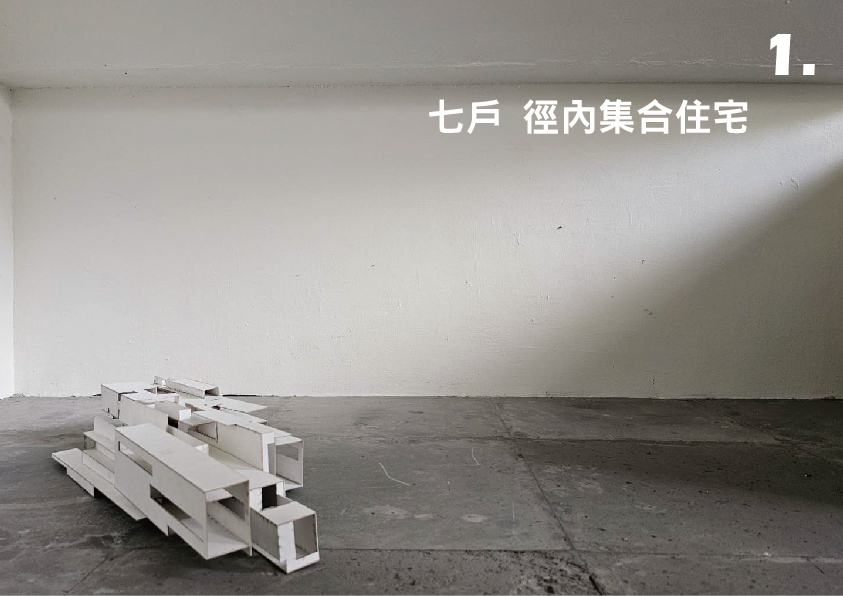
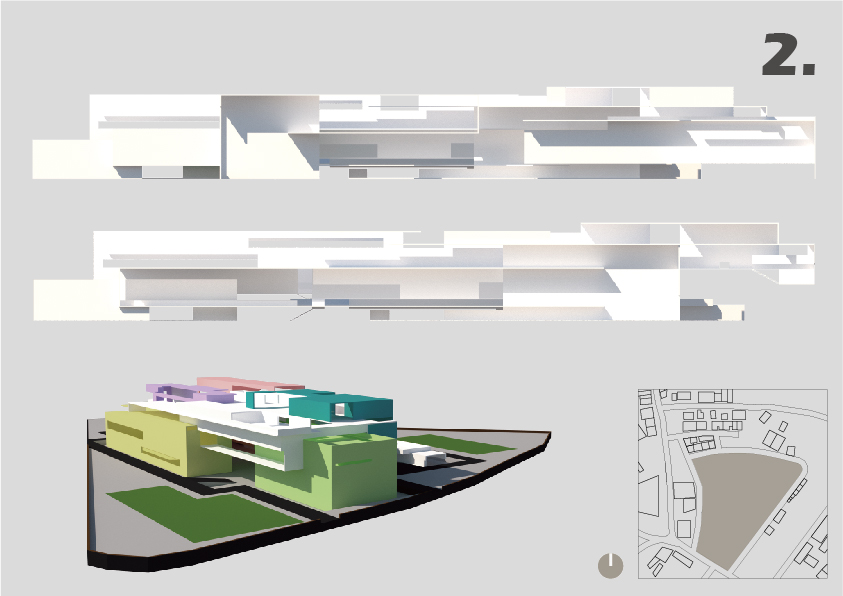
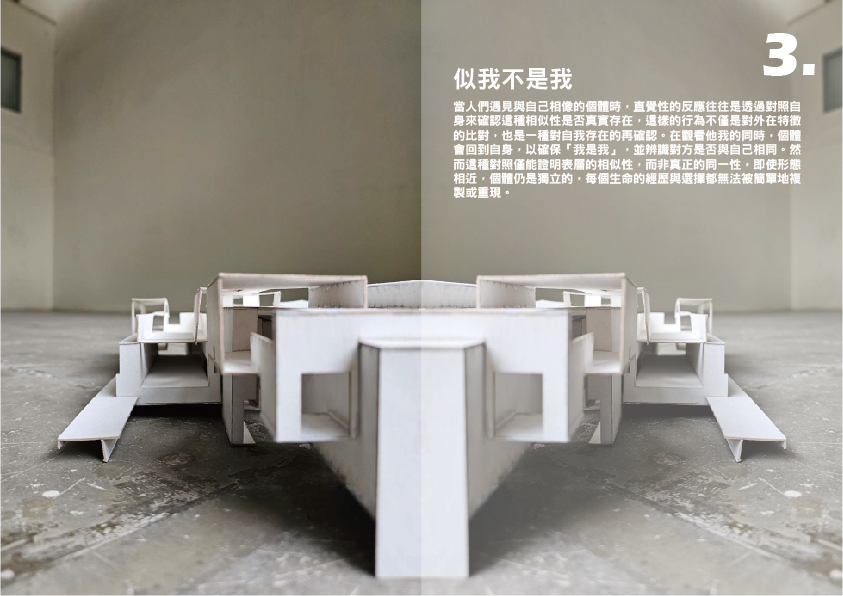
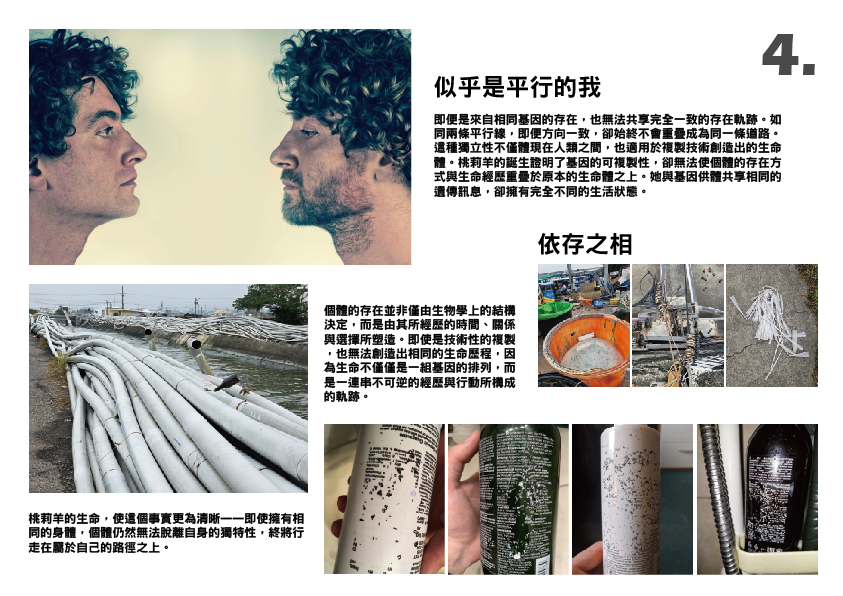
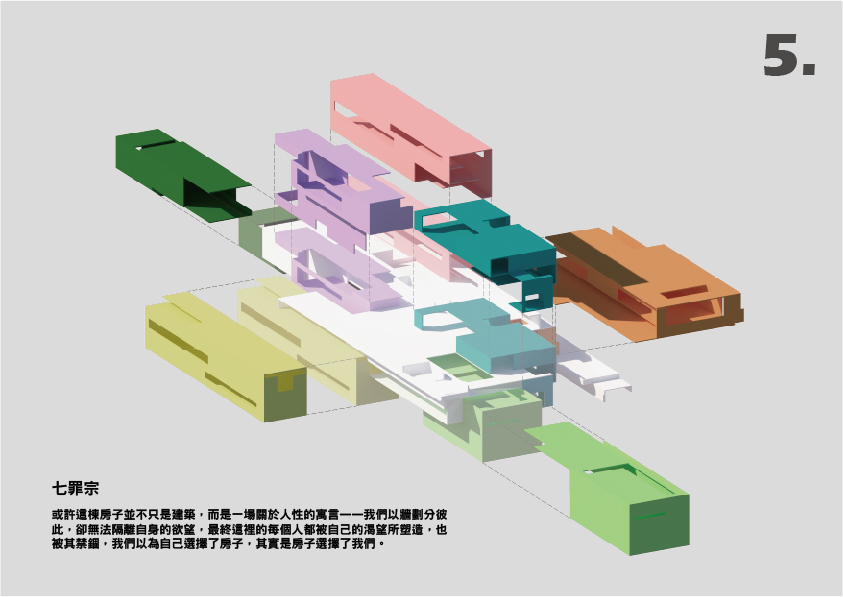
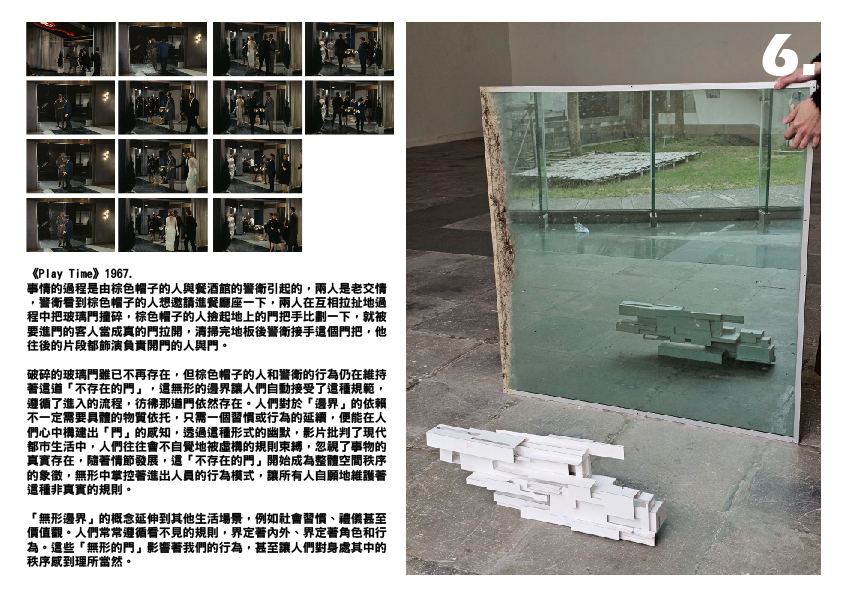
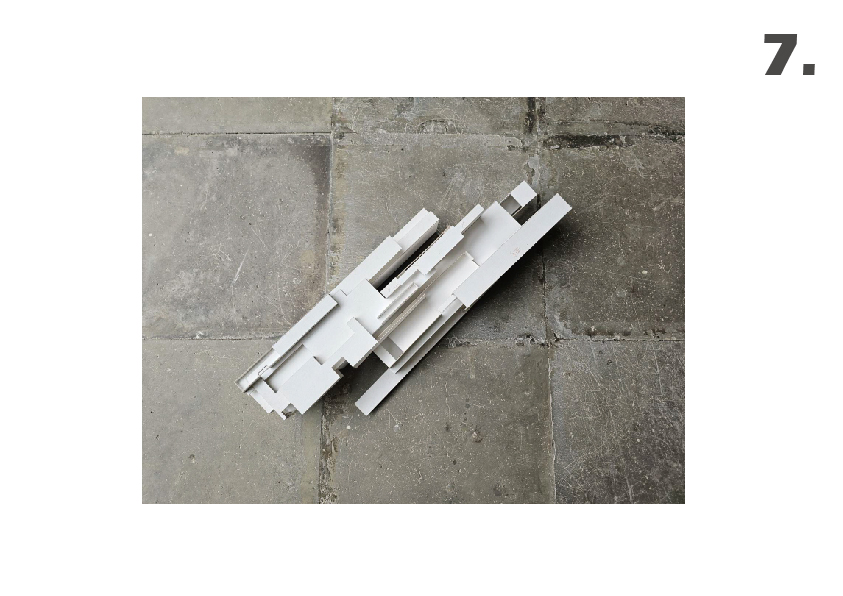
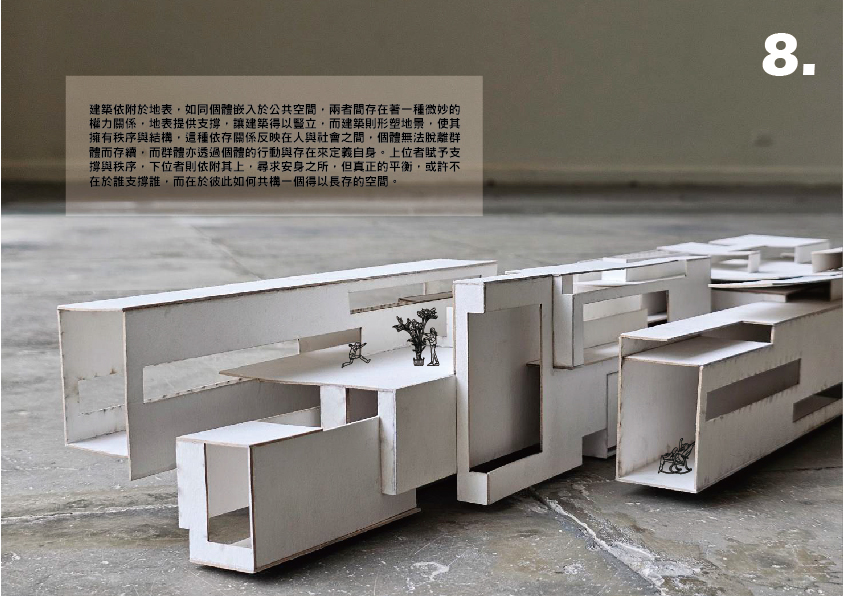
當個體遇見與自己相似的存在時,直覺上會透過對照來確認這種相似性是否真實,這不僅是形態上的比對,更是一種對自身存在的再確認,然而即使外在相近,個體仍是獨立的,每個生命的經歷與選擇都無法被簡單複製,七戶徑內集合住宅 便是這種「相似中的異質性」的空間演繹——七戶住宅共享統一語彙,彼此相鄰、互為參照,但每戶的內部空間卻因不同的生活方式而產生變異,如同個體在社會中的獨特性。
這棟住宅不僅是居所,更是一場關於人性的寓言,人們築起牆來劃定自身領域,以為這樣便能擁有安全感,卻無法真正阻隔內在的慾望與焦慮,這些界線既界定了空間的內外,也影響著人們的關係,住宅的佈局模糊了內外的界限,某些區域彼此滲透,使居住者不得不意識到自己的存在與他人的連結,你無法完全獨立於外界,也無法真正掌控你的邊界。
「無形邊界」的概念滲透至日常生活, 社會習慣、禮儀,甚至價值觀,都如同一道看不見的門,影響著行為方式,卻往往不自覺地被接受,這棟建築試圖揭示這種隱藏的秩序,讓居住者在空間中重新思考自身與他人的關係,我們以為自己選擇了房子,還是其實是房子選擇了我們。
When an individual encounters a presence similar to themselves, their instinctive reaction is to compare and verify whether this resemblance is genuine. This process is not merely a comparison of external forms but also a reaffirmation of one's own existence. However, even when appearances are similar, individuals remain independent; each life experience and choice is unique and cannot be simply replicated. Seven Residences Within a Path is an architectural interpretation of this "heterogeneity within similarity"—seven residences share a unified architectural language, standing adjacent to one another and serving as mutual references. Yet, the internal spaces of each residence evolve differently based on the inhabitants’ distinct ways of living, mirroring the uniqueness of individuals within society.
This residential complex is not just a dwelling but a metaphor for human nature. People build walls to define their personal domains, believing that doing so grants them security, yet these walls cannot truly separate them from their inner desires and anxieties. These boundaries delineate both spatial relationships and interpersonal connections. The architectural layout deliberately blurs the distinction between interior and exterior, with certain spaces interpenetrating one another, forcing residents to become aware of their own existence in relation to others. One cannot exist entirely independent of the outside world, nor can they fully control their own boundaries.
The concept of "invisible boundaries" extends into everyday life. Social customs, etiquette, and even values function like unseen doors—shaping behaviors while being unconsciously accepted. This architecture seeks to reveal these hidden structures, prompting its inhabitants to reconsider their relationship with others within the space. Do we choose the house we live in, or does the house, in fact, choose us.